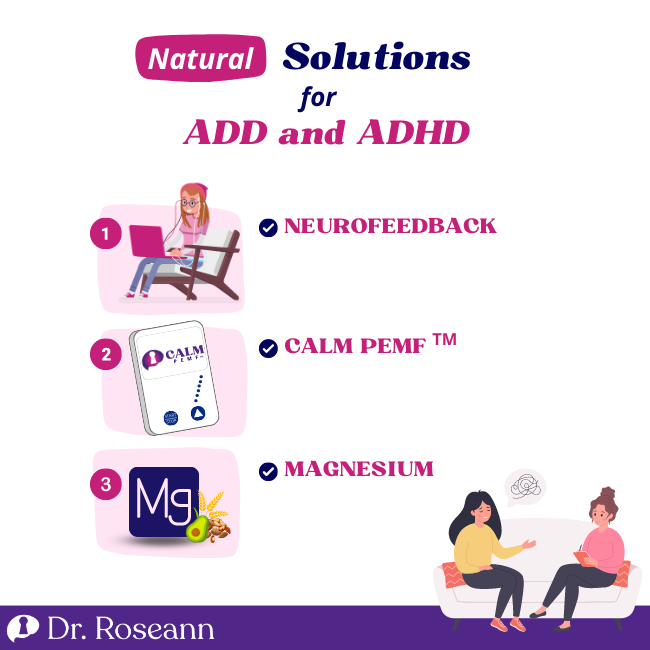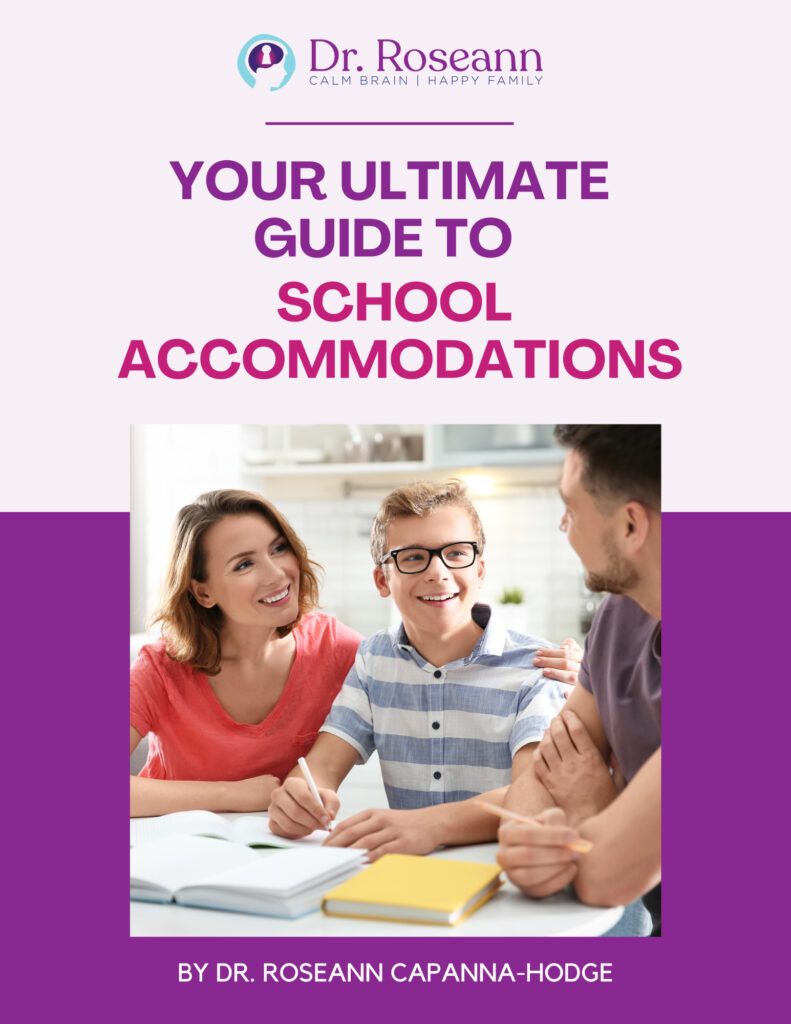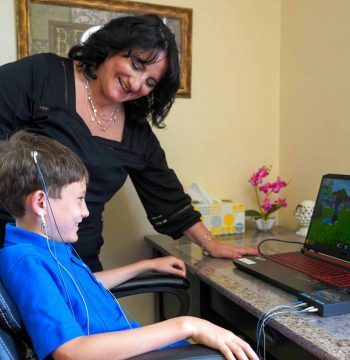Attention-Deficit Disorder (ADD) and Attention Deficit Hyperactivity Disorder (ADHD) are two of the most commonly diagnosed neurodevelopmental disorders in children and teens. These conditions can significantly impact academic and social functioning, making it challenging for diagnosed persons to achieve their full potential. This blog will give you a quick overview of ADD vs. ADHD, including its similarities and differences.
ADHD has a range of behaviors and it affects each child so differently. One child may struggle with executive functioning but do well in school and another may be impulsive and emotionally reactive. That is part of why, even today, that children or teens with ADHD might be missed.
It is crucial to detect and diagnose attention and executive functioning problems early on, as they can continue to impact until adulthood, which is something I see everyday in our Ridgefield, CT center.
We need to help children and teens with ADHD succeed, teaching them practical coping skills to compensate for their challenges is essential. In addition, improved time management, social skills, and communication can be a big benefit too. With all the children I work with, it is important for parents to know that it is never too late to learn executive functioning skills and thrive with ADHD.
What is ADHD?
A child diagnosed with ADHD or Attention-Deficit Hyperactivity Disorder may exhibit impulsivity, hyperactivity, inattention, or a combination of these symptoms. This neurological condition is often misunderstood as simply the inability to focus and act disruptively. However, this is not entirely accurate.
There are three major subtypes of ADHD: predominantly inattentive, predominantly hyperactive/impulsive, and a combination. ADHD became the collective and clinically accepted term for all these presentations.
No two children with ADHD are the same. Children with ADHD may be different from others with the same diagnosis because of their pattern of assets and weaknesses. While some struggle with focus, others can hyperfocus when engaged in tasks that interest them. I recently worked with two brothers with ADHD and they couldn’t be more different in how it affected them. Their temperament was also very different and that impacted how they managed stress.
That is why consulting with an ADHD expert is crucial to prevent misdiagnosis. We use QEEG brain maps to see exactly what areas are functioning or not to support a definitive diagnosis of ADHD. QEEG brain maps are 89% effective in diagnosis compared to rating skills which are less than 53% effective.
ADHD Symptoms – Hyperactive/Impulsive Type
Children and teens with an ADHD diagnosis (predominantly hyperactive-impulsive ADHD) usually exhibit these common symptoms. However, the symptoms of ADHD in the two other presentations may differ.
- Fidgeting or frequently squirming
- Difficulty sitting still or remaining seated
- Running or climbing excessively
- Talking excessively or blurting out answers before a question is completed
- Problems with waiting for one's turn
- Interrupting or intruding on others' conversations or activities
What is ADD?
ADD stands for Attention Deficit Disorder, a neurodevelopmental disorder affecting a person's ability to pay attention, stay focused, and control impulses. Children and teens with ADD struggle to maintain attention and focus. This subtype doesn’t display issues with impulsivity.
This condition can make it difficult for them to complete tasks, follow instructions, and organize their thoughts. ADD is the inattentive subtype of ADHD, which includes three subtypes. When someone has the inattentive subtype of ADHD, they may not get diagnosed as quickly as a child who is observably behaviorally dysregulated. I just diagnosed an intellectually gifted 17-year old with ADHD and if we didn’t have a QEEG brain map as part of our intake process, it was likely he might never have been diagnosed.
While there is often confusion between ADD and ADHD, the American Psychiatric Association (APA) only officially recognizes ADHD as a diagnosable condition. The current diagnostic criteria for ADHD can include inattention and hyperactivity symptoms.
ADD is still considered by most a subtype of ADHD as it is no longer included in the American Psychiatric Association's Diagnostic and Statistical Manual of Mental Disorders (DSM-5). Because it is regarded as an outdated term, it's safer to refer to ADD as inattentive type ADHD.
ADD Symptoms or ADHD Inattentive Type Symptoms
Here are the common ADD symptoms in children and teens. However, these symptoms of inattention may manifest differently with each child.
- Difficulty paying attention to details or staying focused on tasks
- Difficulty sustaining attention during activities or conversations
- Frequently making careless mistakes in schoolwork or other activities
- Difficulty organizing tasks and activities
- Avoidance or dislike of activities that require sustained mental effort
- Easily distracted or forgetful during daily activities
- Problem completing tasks or following through on instructions
- Frequently misplacing or losing items, such as keys or homework
- Difficulty listening or following conversations
- Problem with time management and meeting deadlines
ADD vs. ADHD: Similarities
When comparing ADD to ADHD, what we are talking about is the overlap amongst the subtypes. Difficulties with attention characterize this neurodevelopmental disorder. Below is a closer look at the similarities between the ADHD subtypes:
Attention Difficulties
All types of ADHD involve problems sustaining attention and focus, making it hard for the children and teens who have it to complete tasks or stay organized. They may also have difficulty remembering appointments, deadlines, or other important information. Executive functioning challenges get in the way of their daily life.
These kids will also show difficulty following through on tasks or commitments, even if they were initially interested or motivated to complete them. They also need to improve their attention to detail to prevent careless mistakes.
Brain Chemistry and Structure
Studies have found that individuals with ADHD may have differences in how their brains process dopamine and norepinephrine (Del Campo et al., 2011). These two neurotransmitters play a role in attention and executive functions. On a QEEG brain map, a person with the hyperactive-impulsive type of ADHD looks very different from the primarily inattentive type of ADHD. Their brain waves in the regulations related to those functions simply don’t function the same. The good news is that these regions of the brain can be trained to improve inattentiveness, impulse control and cognitive processing with neurofeedback for ADHD.
Onset
Both typically develop in childhood and persist into adulthood or may not be diagnosed until they're older. Often, the symptoms become apparent during the early school years, when children are expected to pay attention, follow directions, and complete tasks independently. The clinical criteria for ADHD requires that symptoms appear before age 12.
The majority of the children and teens that I work with who have ADHD are also very bright. That means that they can compensate with intellect and may be missed until the teen years or college. Looking back at teacher comments and report cards can often open the door to a history of smaller issues that may reflect ADHD.
ADD vs. ADHD: Differences
While ADD and ADHD are often used interchangeably before, these terms refer to different subtypes of the condition. Now, ADHD is used to describe both states, and ADD is just one of the types of ADHD. But first, here are their significant differences:
Hyperactivity
ADD was traditionally used to describe the inattentive subtype of attention deficit disorder, while ADHD was used to describe the hyperactive subtype. As such, children and teens with ADHD may display symptoms of hyperactivity, such as restlessness or fidgeting, that are not typically seen in those with inattentive ADHD.
Impulsivity
ADHD can involve impulsive behavior. Children and teens with these disorders may act without thinking or interrupt others without consideration of the consequences. Because of their impulsiveness, delayed gratification doesn't apply to them, and they are more prone to taking risks. As a result, they are likely to binge eat, overspend, drive recklessly, engage in substance abuse, and utter impulsive speech.
Perception
Children with ADHD inattentive type may seem to lack attention or focus, causing parents to think their kids are lazy. They struggle with executive functioning in learning and processing despite often being intelligent. Those with ADHD combined type or hyperactive-impulsive type, on the other hand, may exhibit a more energetic and active condition due to hyperactivity.
How Do ADD and ADHD Affect Learning?
ADHD Inattentive Type can significantly impact a person's ability to learn and succeed academically. Their lack of executive functioning skills makes completing even simple tasks a challenge. Executive functioning is different from ADHD, but everyone with ADHD struggles with it. Children and teens showing symptoms of these conditions struggle with schoolwork, causing some to refuse to go to school.
1. Challenges with Focus and Concentration
Children and teenagers with these conditions often experience challenges with executive functioning, affecting their ability to plan for future tasks like homework or school activities. Poor executive functioning also leads to issues with focus and concentration during examinations. These behaviors can hurt a child's school performance.
2. Struggles with Organization and Time Management
Children with ADHD typically have shorter attention spans and may require extra time for homework and tests. As a result, they need to develop better time management and organizational skills. In addition, establishing routines and systems can be helpful. For instance, calendars, binders, and incentives can assist them in staying organized and keeping track of their school work.
3. Impact on Memory and Recall
Both conditions can uniquely impact a child's memory, as attention is vital for memory. Essentially, if a child can't focus, they won't be able to pay attention, which can disrupt their cognitive processes. In addition, due to some brain regions not functioning, children and teens with ADHD can experience long-term, short-term, or working memory difficulties, depending on the severity of their symptoms.
4. Difficulties with Reading and Writing
As children with ADHD struggle with sustaining attention for prolonged periods, reading and writing tasks are challenging. Reading and writing are complicated tasks that require executive functioning and working memory. For example, these kids may have difficulty focusing on the text when reading or maintaining a train of thought when writing. They also struggle to slow down enough to get their thoughts on the page. It is why a child's learning disability may be misdiagnosed as ADHD and vice versa.
Support for Students with ADD and ADHD

ADHD students may benefit from school accommodations provided through a 504 plan or an Individualized Education Plan (IEP) under the Individuals with Disabilities Education Act. In addition, because children with this medical diagnosis are different from normal kids, they will particularly benefit from these things:
Download The Ultimate Guide to School Accommodations to Become Your Child’s Best Advocate
➡️ Get the ultimate accommodations guide that has all of “the meat and none of the potatoes” with accommodations for more than 30 common issues and conditions
➡️ The exact accommodations you need for any school meeting or letter from a seasoned school psychologist and IEP and 504 meeting veteran
➡️Come prepared with the accommodations requests that actually can help your child at school
Creating an Inclusive Learning Environment
Consider offering individualized accommodations based on the specific needs of each student with ADHD. Examples include extended time on tests, preferential seating, and using fidget toys. A sensory approach to learning will also help them stay engaged, which involves implementing hands-on activities and using visuals or auditory cues to enhance learning.
Frequent breaks can help them refocus and recharge. Giving them a quiet space to work can help reduce distractions and improve their ability to concentrate. Furthermore, posting a daily schedule will help them understand what is expected of them.
Develop Strategies for Accommodating Learning Needs
Developing strategies for accommodating the learning needs of students with ADHD involves creating a personalized approach that considers each student's unique challenges and strengths. It consists of identifying the child's needs by testing, researching, and gathering information to determine their required educational services.
Collaboration with Parents and Professionals
It's crucial to work with the student and their parents to identify the specific challenges they face in the classroom due to their condition. The communication between the student and parents should continue.
The student's progress should also be assessed regularly to determine whether their accommodations still benefit them or need adjustment. Working collaboratively with other educators can lead to the creation of more effective strategies for the child.
Natural Solutions for ADD and ADHD

Parents may use natural solutions for the different types of ADHD instead of stimulant medications. For example, neurofeedback is an excellent natural treatment for this mental health condition, offering a medication-free option for altering the mind (Arns et al., 2014).
It acts as a personal trainer for your child's brain waves, which can change based on their level of focus. Neurofeedback aims to teach the brain how to shift into a more efficient state of concentration by producing the brain waves associated with focus.
This way, it acts as a coach, encouraging healthy behaviors that improve concentration, motivation, and impulse control while reducing distractibility. As a result, children and teens with ADHD may experience better relationships at work or school. There will be fewer disruptions with the child's teacher and less conflict with siblings.
Neurofeedback is a highly effective and non-invasive treatment for ADHD, and it is more like a workout for the brain, similar to exercise for the body. During neurofeedback therapy sessions, individuals use their minds to reinforce their subconscious and teach their brains to change their behavior.
Unlike medication, neurofeedback has minimal side effects, the most common being mental fatigue. This is a natural response, as after any form of physical exercise, one may feel fatigued, and the brain is no different.
Aside from neurofeedback, there are other ways to address ADHD naturally and must be included in the child's treatment plan. CALM PEMF™, cognitive behavioral therapy, proper diet and nutrition, and magnesium supplementation are also crucial in helping address the effects of ADHD without any adverse impact on the brain of young people.
Remember that untreated ADHD can affect your child for long periods. They must get the proper support from qualified mental health professionals. It starts with the appropriate diagnosis to see improvements in their school and home life.
We assist families in managing common clinical issues that children and teenagers face, such as ADHD executive functioning, learning disabilities, and other issues kids face today. To learn more about how our programs can benefit your family, check out this ADHD case study
If you want to help your child or teenager manage their ADHD or behavior naturally and effectively, take our solution matcher quiz. This quiz can help you identify the best next step for your family's needs.
Citations
Arns, M., Heinrich, H., & Strehl, U. (2014). Evaluation of neurofeedback in ADHD: The long and winding road. Biological Psychology, 95, 108–115. https://doi.org/10.1016/j.biopsycho.2013.11.013
Del Campo, N., Chamberlain, S. R., Sahakian, B. J., & Robbins, T. W. (2011). The Roles of Dopamine and Noradrenaline in the Pathophysiology and Treatment of Attention-Deficit/Hyperactivity Disorder. Biological Psychiatry, 69(12), e145–e157. https://doi.org/10.1016/j.biopsych.2011.02.036
Always remember… “Calm Brain, Happy Family™”
Are you looking for SOLUTIONS for your struggling child or teen?
Dr. Roseann and her team are all about solutions, so you are in the right place!
There are 3 ways to work with Dr. Roseann:
You can get her books for parents and professionals, including: It’s Gonna Be OK™: Proven Ways to Improve Your Child’s Mental Health, Teletherapy Toolkit™ and Brain Under Attack: A Resource For Parents and Caregivers of Children With PANS, PANDAS, and Autoimmune Encephalopathy.
If you are a business or organization that needs proactive guidance to support employee mental health or an organization looking for a brand representative, check out Dr. Roseann’s media page and professional speaking page to see how we can work together.
Dr. Roseann is a Children’s Mental Health Expert and Therapist who has been featured in/on hundreds of media outlets including, CBS, NBC, FOX News, PIX11 NYC, The New York Times, The Washington Post,, Business Insider, USA Today, CNET, Marth Stewart, and PARENTS. FORBES called her, “A thought leader in children’s mental health.”

She is the founder and director of The Global Institute of Children’s Mental Health and Dr. Roseann Capanna-Hodge. Dr. Roseann is a Board Certified Neurofeedback (BCN) Practitioner, a Board Member of the Northeast Region Biofeedback Society (NRBS), Certified Integrative Medicine Mental Health Provider (CMHIMP) and an Amen Clinic Certified Brain Health Coach. She is also a member of The International Lyme Disease and Associated Disease Society (ILADS), The American Psychological Association (APA), Anxiety and Depression Association of America (ADAA) National Association of School Psychologists (NASP), International OCD Foundation (IOCDF) International Society for Neurofeedback and Research (ISNR) and The Association of Applied Psychophysiology and Biofeedback (AAPB).
© Roseann-Capanna-Hodge, LLC 2023
Disclaimer: This article is not intended to give health advice and it is recommended to consult with a physician before beginning any new wellness regime. *The effectiveness of diagnosis and treatment vary by patient and condition. Dr. Roseann Capanna-Hodge, LLC does not guarantee certain results.














